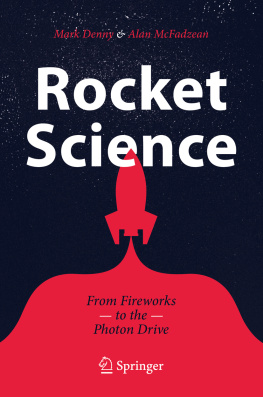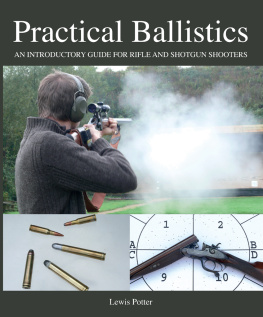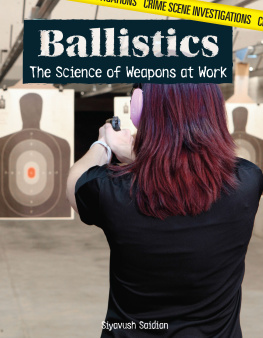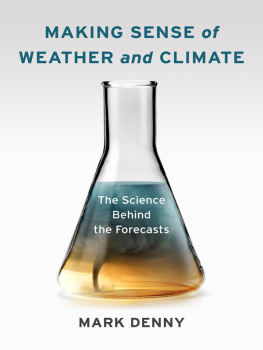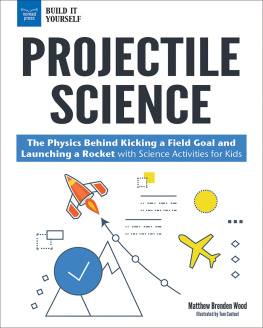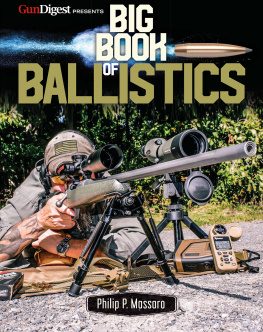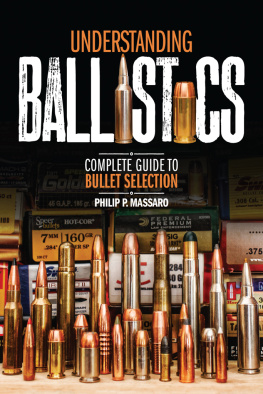THEIR ARROWS WILL DARKEN THE SUN
THEIR ARROWS WILL DARKEN THE SUN
The Evolution and Science of Ballistics
MARK DENNY

2011 The Johns Hopkins University Press
All rights reserved. Published 2011
Printed in the United States of America on acid-free paper
9 8 7 6 5 4 3 2 1
The Johns Hopkins University Press
2715 North Charles Street
Baltimore, Maryland 21218-4363
www.press.jhu.edu
Library of Congress Cataloging-in-Publication Data
Denny, Mark, 1953
Their arrows will darken the sun : the evolution and science of ballistics / Mark Denny.
p. cm.
Includes bibliographical references and index.
ISBN-13: 978-0-8018-9856-3 (hardcover : alk. paper)
ISBN-10: 0-8018-9856-0 (hardcover : alk. paper)
ISBN-13: 978-0-8018-9857-0 (pbk. : alk. paper)
ISBN-10: 0-8018-9857-9 (pbk. : alk. paper)
1. Ballistics. 2. Trajectories (Mechanics). 3. Aerodynamics. I. Title.
UF820.D46 2011
623.51dc22 2010023459
A catalog record for this book is available from the British Library.
Special discounts are available for bulk purchases of this book. For more information, please contact Special Sales at 410-516-6936 or specialsales@press.jhu.edu.
The Johns Hopkins University Press uses environmentally friendly book materials, including recycled text paper that is composed of at least 30 percent post-consumer waste, whenever possible. All of our book papers are acid-free, and our jackets and covers are printed on paper with recycled content.
Contents
Acknowledgments
The process of publishing a book is one that takes time and the expertise of many people besides the author. For permission to reproduce photos from his collection, I am grateful to Bob Adams. For his excellent drawings of soldiers from classical antiquity, I thank Johnny Shumate. At the Johns Hopkins University Press, editor Trevor Lipscombe and art director Martha Sewall have worked their usual magic, while copyeditor Carolyn Moser has turned my turgid text into pristine prosethank you all.
THEIR ARROWS WILL DARKEN THE SUN
Introduction
Ballistic science has been important to humans for as long as they have hunted or waged war, but it is only over the past 250 years that the scientific discipline of ballistics has matured from a craft art. A deep understanding of modern ballistics theory requires specialized study over several years, and yet it holds a fascination for nonspecialists. You most likely would not have picked up a book explaining the science of thermodynamics, for example, though thermodynamics is probably more important to our daily livesso why a book on ballistics? Maybe because of the popularity of hunting and target shooting. Ballistics and guns go together like ham and eggs, although, as we will see, ballistics applies to rocks, arrows, bombs, rockets, and flaming pianos as well as to bullets.
Why read a concise, semitechnical account of ballistics such as this one? Maybe because youre too busy earning a living to do a degree in ballistics but are left unsatisfied by some of the Sunday comics explanations of how it all works. You will not become a better shooter simply by reading this book: you know better than I do about the practicalities of your hobby, be it benchrest, bow hunting, or BBs. You will, however, gain a better understanding of ballistics scienceof why ballistic trajectories are the way they are.
Ballistics has a long historyI will share some of it with youbecause, of course, the development of firearms has greatly influenced the conduct and outcome of wars. Much of our understanding of ballistics principles came directly as a result of military development. Small arms and artillery weapons, their propellants and projectiles, plus rockets and ballistic missiles from arrows to ICBMs, have all evolved from simpler beginnings, over decades or centuries. Improvements led to longer ranges, which, as we will see, brought in new physics that required understanding (or, at least, accommodating) before evolution could continue. New understanding led to yet longer ranges and greater accuracy, and so the cycle repeated. It continues to this day.
The figures for gun ownership give a false impression of the worldwide interest in hunting and shooting. There are 192 million privately owned firearms in the United States and almost none in England, though both countries sport many hunters and shooters. Outside of the armed forces, it is primarily hunters and target shooters who are interested in ballistics. How many such folk are there? According to the National Shooting Sports Foundation there are over 20 million active hunters in the United States (including 3.3 million bow hunters) and over 23 million target shooters (6.6 million of them are archers). They shoot with handguns, rifles, shotguns, air guns, longbows, and crossbows; they do it standing up, sitting down, and lying prone. In England there are over 1,000 small-bore rifle and pistol clubs; around the world the story is the same. Target shooting with small arms was one of the founding sports of the modern Olympic Games, beginning in 1896, and archery was only four years behind.
Keen interest in a subject naturally leads many people to want to understand it at a deeper level than they can glean from everyday experience. Hence, sailors turn to aerodynamics to see how the wind fills their sails, and target shooters turn to ballistics to learn the nuts and bolts of their hobby (or professionmany military personnel need or want to know about ballistics). To cater to the large public appetite for ballistics, there are literally thousands of publications. These tend to fall into two broad categories which I can encapsulate with two made-up book titles. The first is Splat! How to Build an Egg-Thrower in Your Garage! and is generally aimed at a younger readership. Such books tend to be light on technical details and heavy on fun. At the other extreme you will find titles such as Spin Stabilization Data for .30-06 M2 Ball Ammunition: What Every M1903A4 Rotating-Bolt Springfield Rifle Enthusiast Needs to Know. OK, so this is hyperbole, but you get the point: books in this second category tend to be hypertechnical and very specialized. While full of technical details, however, they do not shed much light on the physical principles.
My book is aimed (an appropriate word) at the sparsely populated gulf between these two extremes: I will share with you the physics, rather than the engineering detail, that underlies ballistics (the why of ballistics, which I mentioned a couple of paragraphs back). My purpose is to get across to you the science of what is going on when you pull the trigger or release the arrow. We will follow a projectile (arrow, bullet, artillery shell) as it arcs through the air and see what effect it has upon a target.
then read on.
The scientific discipline of ballistics subdivides naturally into three parts, and my book adopts this convention. First there is the brief launch phase of a projectile. The object here is to provide the arrow, musket ball, or artillery round with as much energy as possible and send it in the desired direction. Second is the longer flight phase during which (until recently) the archer, shooter, or gunner has had no influence over the projectilephysics takes full control. Finally the terminal phase: our spear, sniper bullet, or mortar round hits something and penetrates, fragments, or explodes. In this book you will discover accessible explanations of all three ballistic phases, with or without math.
Next page

